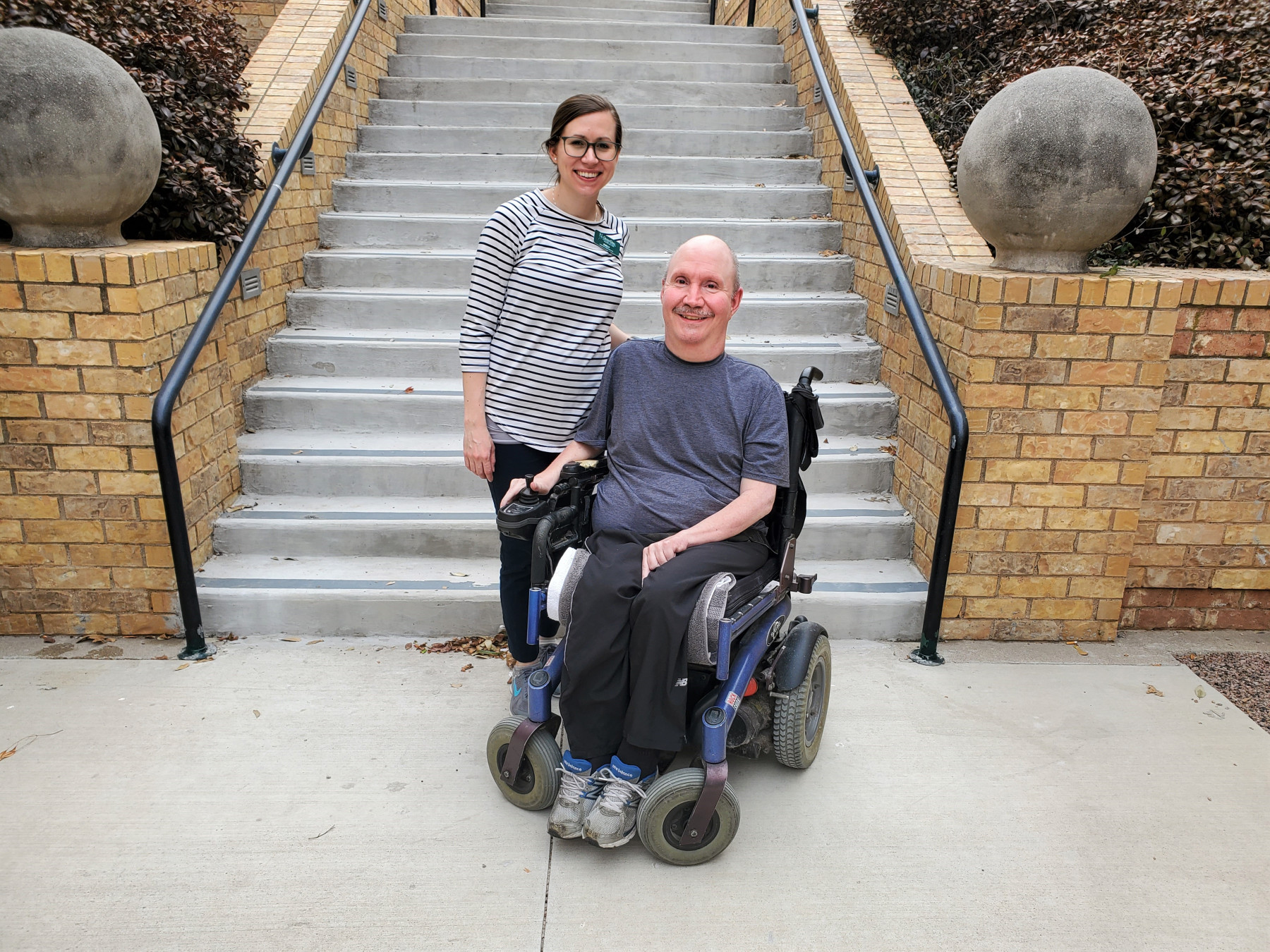Open Communications During PT With Your SMA Patients

The relationship between a physical therapist and patient is very important for many reasons and should be an open, honest, and trusting relationship. This is especially important when you are working with someone with SMA, or another neurological disorder, who you will most likely be seeing long-term. It is important that the patient be able to openly ask any questions regarding safety as well as goals and the reality of meeting them. There will probably be activities that the patient hasn’t attempted in years, and it will take trust to explain how they will happen and what the outcome should be. The patient should feel comfortable saying no if they do not wish to try something, and the therapist should also feel comfortable accepting that. Once there is a good relationship foundation, the therapist can then explain why they should try the activity, what it will accomplish and how it will carry over into their daily lives.
Lines of communication should always be open, both ways. The therapist should be able to explain in detail every action that will take place and in what order to make sure the patient is comfortable and feeling confident in knowing what to expect. The patient may be nervous and feel as if therapy is going to be painful and uncomfortable. Questions should be asked both ways to ensure the patient’s needs and goals are being addressed in the most efficient way possible. Patients should never feel as if they cannot say no or be open about being nervous. It can be very nerve-wracking for the patient to allow you to put them into positions or ask them to do things, like sitting unsupported, that they would not trust other people with. If you feel as if the patient may not be able to ask you to stop because of lack of comfort, you could establish a “safe word,” something the patient can say that you would know to back off or stop completely with the activity.
Knowing when to push your patient is something that will come with time and a good relationship. Sometimes, the patient will be nervous and have doubts about themselves and what they can do. When you have worked with someone long enough, you begin to know what they can and can’t do and what they will and won’t be comfortable with. For example, with my patient Michael, I know that he trusts me and will listen to me. I know that when I want to attempt something new, it is sometimes better for him if I give him a few weeks’ notice to think about and warm up to the idea of something new. Depending on the new activity, sometimes I must push Michael a little bit and tell him why we should perform the activity and let him know that I am confident that he can perform it safely. We have an open and honest conversation about how it will be accomplished, and he asks whatever questions he has. Bottom line, he has the final decision, and he knows that.
Let your patient know how they will possibly feel the next few days. When there is a new exercise or activity performed, they may be a little sore. Let them know that it’s okay and normal, and what to do to ease the discomfort. Always have a way they can contact your office if they are not sure if what they are feeling or how sore they are is okay. Make sure they know they are never bothering you with any questions and your whole goal is to help them to reduce their pain and improve their function. Sometimes you only see these patients once a week and you do not want them sitting in pain for the entire week before they come back to see you again.
When you work with someone for a long time, it is likely a friendship will form. A relationship with a long-term patient is different than patients you see for only a few months. Know that your patients enjoy seeing your human side and it will make them more likely to communicate and open up to you if you are willing to open up to them. This isn’t a requirement and doesn’t mean you can’t be successful and meet your patient’s goals without forming a relationship, but remember, you are a big part of their life. You are helping them accomplish things they didn’t think were possible. Be open and honest and enjoy your time with them.
************ Patient Perspective ************
When I started working with Emily as my physical therapist, we had already known each other for about a year. I knew that she was a competent and qualified physical therapist, and it didn’t take us long to build a trusting and lifelong friendship. Emily, about 99% of the time, is an angel, and 1% of the time, she’s my drill sergeant. While I always say that I want to try new exercises, some of them seem to be extremely daunting. I guess I’m not as brave as I thought I was, so in those brief moments of Emily becoming my drill sergeant, I take what she has to offer and suggest because I trust her. She knows that eventually, I’ll come around.



